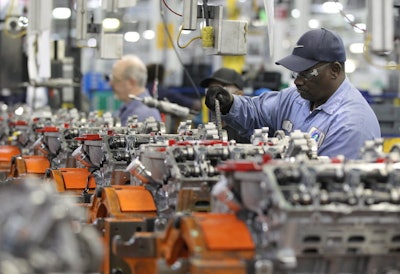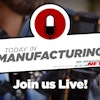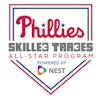
 This article originally appeared in the October print issue of IMPO.
This article originally appeared in the October print issue of IMPO.
According to an article last year in Business Week, the age of the average manufacturing worker is 56. Typically, we talk about this demographic as it relates to an impending worker shortage. What will we do to replace this crop of highly skilled tradespeople? What kind of impact will their mass retirement have on the industry?
But there’s another related issue and its significance is that it’s happening right now: How do the youngest crop of workers – who continue to enter the industry as we speak – best learn from their more seasoned counterparts? How do these two groups use the same tools to drive results when one grew up with the internet and the other has spent 30 years keeping measurements in a notebook in their back pocket?
A Changing Labor Force
The labor force is changing, that much is clear. Part of the problem, explains John Neeley of Fluke Corporation, a designer and manufacturer of electronic test tools, is that there is a significant dip in the number of workers available to take on vacancies left by the Baby Boomers. In fact, some estimates say the Gen X group (comprised of those born between the mid-‘60s and late ‘70s) is only two-thirds the size of the Baby Boomer generation, meaning the necessary headcount for filling some of these available positions is simply not there. In many cases, manufacturers are looking to the generation below (the Millennials) to fill in some gaps in their workforce, making for a diverse team of workers with varying levels of skills and specialties.
Fluke sees this dynamic resulting in a new crop of workers that are trained in a more generalist way. “The older generation is known for having more specialized experience and then teaching one-on-one. That doesn’t exist now,” says Neeley. But what does exist, he explains, are better processes for documenting practices, allowing for the ability to spread out specialist resources. With the right equipment, this can entail field measurements that are saved to a smart phone device or visual inspections shared via smart phone image or video.
Maintenance Technology
Many solutions providers stress the importance of designing solutions for the manufacturing workforce as it is today, while also accounting for future needs and trends. For example, Fluke’s Neeley says that, despite the age gap between many manufacturing workers these days, it’s not just the younger generation that’s getting on board with some of the newest technologies utilizing smart phones and mobile maintenance opportunities. “There’s less of a barrier than you’d think,” says Neeley.
Neeley is one of the architects behind Fluke’s latest “Fluke Connect” product line. With over 20 different Fluke test tools, Fluke Connect was designed to allow users to identify and diagnose problems quickly and confidently, while securely sharing data via an app on their smart phones. Features such as video calls, auto measurements, and graphical displays make the smart phone app functional for users both in the field, and their remote counterparts.
In a typical case, even if a worker with a more generalist skill set is able to take measurements and acquire data, they can easily then turn to the specialist for help. “That’s where you still need coaching and management level work to set up a maintenance philosophy that recognizes where data is important when it comes to machine health,” explains Neeley. And once the data is entered within the app, it becomes a log of secure information where anyone on the team who needs to can access it remotely, in the cloud. Fluke sees this as a way to address what was once a barrier to consistency — people weren’t willing to enter information into a spreadsheet or a log file.
Now, instead, “They can look at all the measurements that anyone on the team has taken for that pump, or motor, or compressor, and they can see if there has been a change, if it’s running hotter, or irregularly. They can see what previous work has been done to it, and that really helps to shorten any kind of troubleshooting cycle,” explains Neeley. “It allows for information to pass from one person to another very easily and then, if you do need expert advice from the person on the team who has known the machine for twenty years — you can pull him in via cell phone and he can see via your phone camera what is going on.”
Catering to Generation Next
But technology is not the only approach that will help smooth the workforce transition throughout the industrial sector. For the MRO distributor Grainger, talent development has become a two-fold endeavor: Not only does the company work towards developing a strong group for their own operations, but they also strive to assist their manufacturing customers in developing the workforce of the future.
For Marty Belle, VP of talent acquisition for Grainger, targeting the workforce gap in skilled trades is a critical area of focus. In an effort to help further the growth of the industrial sector, the company partnered with the American Association of Community Colleges in 2006 to launch the Grainger Tools for Tomorrow Scholarship program. “In essence, we’re trying to increase the number of students who are pursuing degrees and careers in the skilled trades because we see that somewhat diminishing. So to get some focus there, we created this program. It’s plumbing, automotive, HVAC, public safety — those kinds of areas that are really still a heavy focus in the manufacturing sector,” explains Belle. Specifically, the program works with nearly 125 community colleges nationwide and offers around 250 scholarships annually.
But an internal focus for Grainger is trying to assess the objectives of its own workforce and create a culture that supports those. One way has been to create a work environment where groups within their company can solve business problems while feeling their unique needs are being met.
“One of the areas that I believe is very critical and transcends any generation is the type of environment that you create within your place of employment. One of the things that we try to really strive for is creating that inclusive work environment,” explains Belle. Inside of that inclusive work environment are what Grainger calls ‘business resource groups.’ “We have a group for administrative business partners, an African American Business Resource Group, an Asia-Pacific Islander group, a generational resource group, veterans… we also see that place of identity with all of our team members being an important part of engaging and creating that opportunity for our team members to thrive,” explains Belle.
Another component Grainger has identified as being important to the younger workforce is that of flexibility. One thing the company has done to address this is to create a Chicago “hub” location as a way of catering to some of its employees. For example, he says, “A lot of the younger generation don’t appreciate having to drive to (Chicago suburb and location of Grainger headquarters) Lake Forest and they want to be in the center of the action in the city. So we’ve created this tech hub in the city, which has been very critical to our ability to attract that talent base that wants to stay in the city.”
Flex Plan
In the end, it seems to be the case that adapting to the changing workforce has a lot to do with flexibility — whether it be from a culture and training standpoint, to actually changing the way work is done. According to Fluke’s Neeley, taking the right approach can mean speeding up the training process for younger team members, because they learn by doing. And for a more advanced person — someone who truly understands the role of data in a report or work order: “They are usually the earliest adopters.”






















